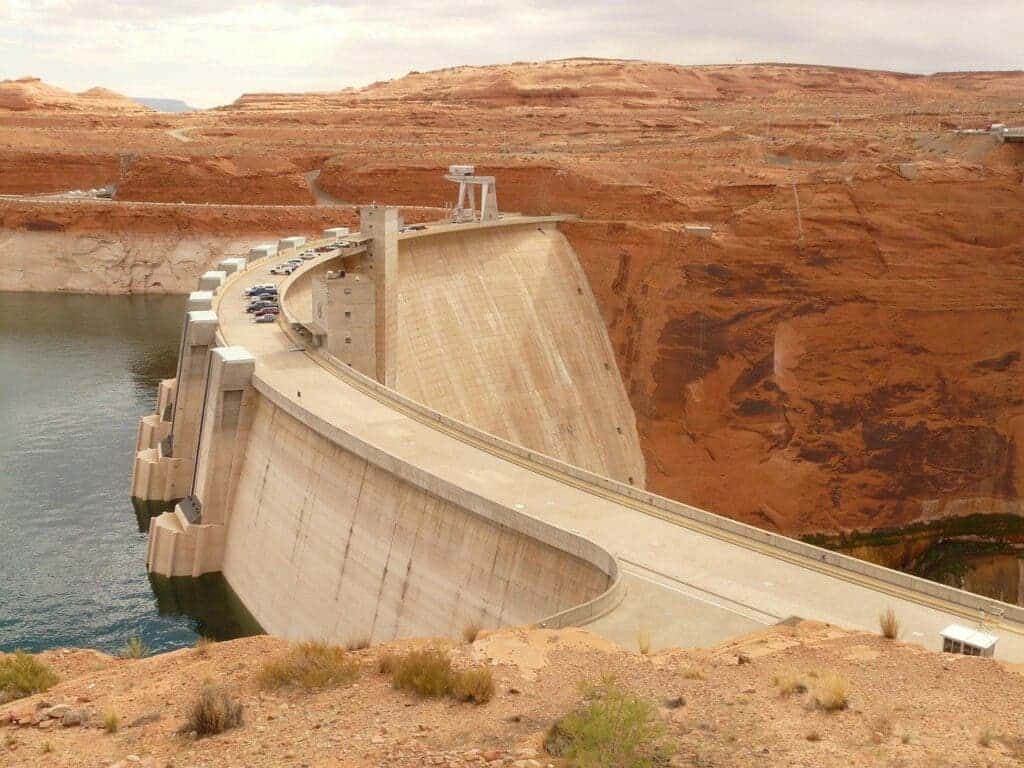As the western USA stares ahead at yet another year of parching drought, the Bureau of Reclamation is calling for involved states to develop a plan for a significant reduction in water use — or be faced with imposed cuts.

The water reservoirs along the Colorado River, the US’ largest reserves of fresh water, are at an unprecedented low level. Against the backdrop of the prolonged drought facing the country, federal officials are taking steps to ensure that these critical supplies do not drop lower — or run out completely.
At a Senate hearing in Washington earlier this month, Bureau of Reclamation Commissioner Camille Calimlim Touton said that much larger reductions in water deliveries are needed, compared to previous estimates, to protect the Lake Mead and Lake Powell reservoirs from going below critical levels. According to her, cuts of between 2 million and 4 million acre-feet next year are needed in water deliveries from the lakes; for reference, the whole state of California is entitled to 4.4 million acre-feet of water from the Colorado River every year, while Arizona receives 2.8 million.
Enforced scarcity
“A warmer, drier West is what we are seeing,” Touton told the Senate Energy and Natural Resources Committee. “And the challenges we are seeing today are unlike anything we have seen in our history.”
Touton’s report comes just seven months after officials from California, Arizona, and Nevada signed an agreement to significantly reduce their intake from Lake Mead, and six weeks after the federal government announced that a large quantity of water will be held back in Lake Powell to ensure that the Glen Canyon Dam maintains its ability to produce electricity. Despite these steps, water levels at the two sites have continued to drop and are at or near record-low levels.
Lake Mead sits at roughly 28% of its total capacity; Lake Powell is at around 27%. Faced with these figures, Touton said it is critical that the cutbacks be set in place, adding that her Bureau is “working with the [seven involved] states and tribes in having this discussion” in the next 60 days. In case these talks are not productive, she cautioned that the Bureau of Reclamation has the authority to “act unilaterally to protect the system, and we will protect the system.”
“We need to see the work. We need to see the action,” she said, calling for representatives “to stay at the table until the job is done.”
Although the water of the Colorado River has long been considered to be over-exploited, with it supplying some 40 million people and farmlands across the western US, its levels did not dramatically decline until the year 2000. At that time, a massive drought hit the area and caused water levels to drop. The effects of this drought, which researchers have determined was intensified by global warming and is part of long-term aridification of the Southwest, are still being felt to this day.
“What has been a slow-motion train wreck for 20 years is accelerating, and the moment of reckoning is near,” John Entsminger, general manager of the Southern Nevada Water Authority which supplies the Las Vegas area, said during the hearing.
The most worrying scenario is the one in which Lake Mead’s water level drops below 895 feet above sea level, below which water would no longer pass through Hoover Dam towards California, Arizona, and Mexico. Currently, water levels in Lake Mead sit at 1,045 feet above sea level.
“We are 150 feet from 25 million Americans losing access to the Colorado River, and the rate of decline is accelerating,” Entsminger added. “However, and there’s no way around this, cities alone cannot address this crisis.”
One of the main areas where reductions are possible is in agriculture. Around 80% of the Colorado River’s flow is used for the irrigation of water-intensive crops such as alfalfa, which are mainly used as cattle feed. Investments in irrigation efficiency and better crop selection can help reduce demand of the farming sector, and through such steps “agricultural entities are protecting their own interests,” he adds.
That being said, it is yet unclear where these reductions in water supply will be made. What is clear, however, is that worsening climate factors, fueled by man-made greenhouse gas emissions, have pushed the Colorado watershed to a point where it can no longer sustain the same levels of water use that it did before the 2000’s. Hopefully, officials and the wider public will be able to work together to tweak water use in such a way that the affected areas are not faced with a complete lack of water.


